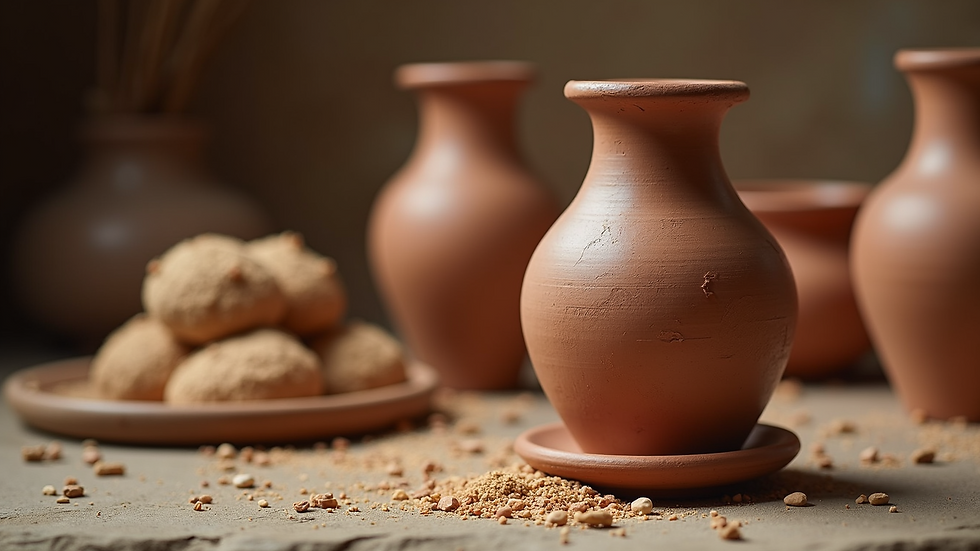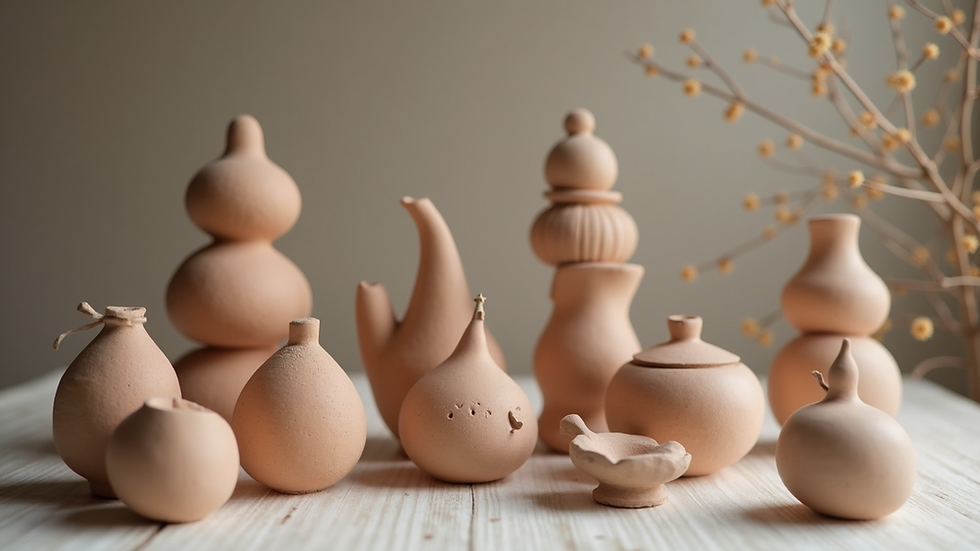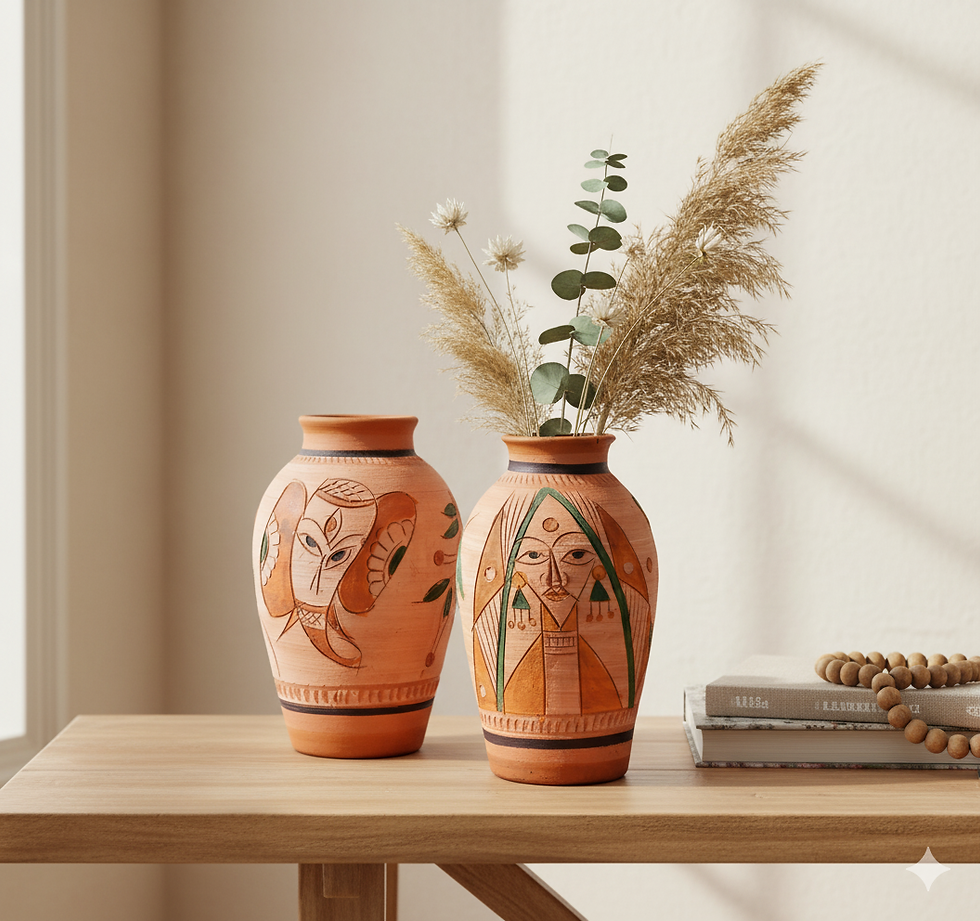Exploring the Timeless Beauty of Clay Art
- Jul 18
- 4 min read
Clay art has fascinated humankind for centuries. From ancient civilizations to contemporary artists, clay has emerged as a versatile medium for expression. It allows for creativity while also connecting us to our cultural heritage. In this blog post, we will explore the beauty of clay art, its various forms, techniques, and its impactful role in our lives today.
The World of Clay Art
Clay art encompasses a broad range of artistic expressions using clay as the primary medium. This includes pottery, sculpture, tiles, and other decorative and functional pieces. Each form showcases unique characteristics shaped by the artist's intent, style, and cultural background.
For instance, pottery is often utilitarian, designed for everyday use, while sculptures can be grand and abstract. The diversity within clay art reflects the artist’s aim to convey emotions, tell stories, or showcase craftsmanship.

The Techniques Behind Clay Art
Creating beautiful clay art involves various techniques that have evolved over centuries. Understanding these methods can enhance appreciation for the craft.
Hand-Building: This technique involves shaping clay using only hands and simple tools. Artists can create unique forms like bowls, vases, and figurines through methods like pinching, coiling, and slab construction.
Wheel-Throwing: This method utilizes a potter's wheel to shape clay into symmetrical pieces. It's a skill that requires practice and precision but results in beautifully round forms such as plates and cups.
Slip Casting: A technique often used for mass production, where liquid clay (slip) is poured into molds. Once dried, these pieces can be refined and finished.
Glazing: After shaping, artists apply glaze to enhance the art's aesthetic and functional properties. The application process can affect the final result dramatically, offering a variety of finishes and textures.
Each of these techniques offers a different artistic outcome, allowing artists to express creativity in multifaceted ways.

Cultural Significance of Clay Art
Clay art holds deep cultural significance across the globe. It often reflects the traditions and values of specific communities. For example, Native American pottery is renowned for its symbolic designs, which often depict elements of their rich history and spirituality.
Similarly, Japanese ceramics are revered for their meticulous techniques and aesthetic principles, emphasizing simplicity and natural materials. Cultures worldwide utilize clay and its artistry as a means to pass down stories, embed beliefs, and preserve heritage.
Moreover, clay art can be a source of community and identity. Workshops and collective projects involving local artisans can foster a strong sense of belonging and shared cultural experience.
The Eco-Friendly Nature of Clay Art
In an age where sustainability is crucial, clay art also provides an eco-friendly avenue for creativity. Clay is a natural resource, abundant and biodegradable. Unlike many synthetic art materials, clay does not contribute to long-term environmental damage. Moreover, many artists focus on sustainable practices by sourcing local materials and using non-toxic glazes, making clay art an appealing choice for environmentally conscious individuals.
Additionally, the features of handmade clay sculptures often involve reusability and longevity, encouraging less waste. When you invest in a unique piece of clay art, you not only bring beauty to your space but also support sustainable practices.

Getting Started with Clay Art
For those interested in exploring their creativity, starting with clay art can be an enriching experience. Here are some steps to help you dive into this world:
Choose Your Medium: Decide if you want to focus on pottery, sculpture, or another form of clay art. Each has its unique tools and techniques.
Gather Tools and Materials: Basic tools for hand-building include rolling pins, knives, and shaping tools. If you opt for wheel-throwing, you'll need a potter's wheel and related equipment.
Take a Class or Workshop: Learning from experienced instructors can provide valuable insights and techniques. Consider joining a local pottery studio or taking an online course.
Practice Regularly: Like any skill, regular practice is essential. Start with simple projects and gradually increase the complexity as you become more comfortable with clay.
Join a Community: Engage with other clay art enthusiasts online or in local groups. Sharing experiences and learning from each other can greatly enhance your skills and motivation.
Embarking on a creative journey with clay art can lead to significant personal growth and joy.
Why Clay Art Endures
The timeless beauty of clay art is its ability to connect the past with the present. Its legacy spans thousands of years, yet it remains exceptionally relevant. The tactile nature of clay allows for a deeply personal artistic expression that is hard to replicate with digital mediums.
As we continue to navigate the complexities of modern life, clay art serves as a grounding force, reminding us of our creativity, cultural roots, and the beauty that can emerge from our hands.
While many forms of art compete for our attention, clay art persists as a testament to human creativity, craftsmanship, and heritage. Whether you appreciate these works in galleries or create your own pieces, favoring handmade clay sculptures can bring warmth and distinction to everyday life.
As you step into the realm of clay art, remember that each piece you create or appreciate tells a story. Embrace the process, learn from the past, and let your creativity flourish. Whether you’re a seasoned artist or a curious beginner, the beauty of clay art is always waiting to be discovered.




Comments